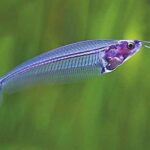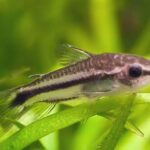Synodontis catfish, often referred to as upside down catfish or squeaker catfish, are a popular freshwater fish for home aquariums. Native to rivers and lakes across Africa, these bottom-dwelling fish have some unique behaviors and care requirements. Read on to learn everything you need to successfully keep synodontis catfish.
Ideal Tank Size
Most synodontis catfish max out between 4-6 inches in length when fully grown. For a single synodontis or a small group, a 30 gallon aquarium is sufficient. If keeping a larger group of 6 or more synodontis catfish, aim for a 55 gallon or larger tank. This gives them adequate swimming space as they are active, fast moving fish.
Provide plenty of hiding spots with rocks, driftwood, and aquatic plants. Synodontis enjoy squeezing into small crevices and under overhangs. Hardy plant species like Java fern, Anubias, and Amazon sword plants help recreate their natural environment.
Water Conditions
In the wild, synodontis catfish live in warm, soft, acidic waters. Replicate similar conditions in your home aquarium. Water temperature between 74-82°F is ideal. Use a submersible aquarium heater to maintain a stable temperature within this range.
Soft, slightly acidic water works best. Test water regularly and aim for a pH between 6.0-7.2, hardness between 5-12 dGH, and low nitrates under 20 ppm. Use peat filtration, driftwood, dried Indian almond leaves, or specialty chemical additives like Blackwater Extract to soften water and lower pH.
Synodontis are sensitive to poor water quality. Keep nitrites at 0 ppm and ammonia at 0 ppm through regular partial water changes and gravel vacuuming. Perform 25-30% water changes 1-2 times per week in synodontis catfish tanks.
Feeding Synodontis Catfish
In the wild, synodontis are opportunistic omnivores that eat a variety of foods. Replicate this varied diet in captivity for healthy synodontis catfish. Offer a mix of foods like:
– Sinking catfish pellets and algae wafers
– Frozen or freeze-dried bloodworms, brine shrimp, mysis shrimp
– Blanched vegetables like zucchini, cucumber, spinach
– Daphnia, mosquito larvae, small shrimp
– High quality flake foods or micro pellets
Feed synodontis catfish once or twice per day. Only offer as much food as they can consume within 2-3 minutes. Uneaten food leads to water quality issues. Use sinking foods as synodontis are bottom feeders. If any food remains after a few minutes, remove it with a net.
Synodontis Catfish Behavior
One of the most intriguing behaviors of synodontis catfish is their ability to swim upside down. Healthy, active synodontis will frequently dart along the tank bottom, plants, and décor while upside down. It’s normal behavior, not a sign of illness.
Synodontis are also vocal fish, earning them the name “squeaker catfish”. They produce a squeaking or croaking sound, especially when caught or stressed. It’s made by grinding teeth in their throat, not with their swim bladder like some catfish.
While generally peaceful community fish, synodontis can be territorial towards their own kind. Provide plenty of hiding spaces and plants to break up lines of sight. This allows multiple synos to establish individual territories and reduces aggression.
Tank Mates for Synodontis
When selecting tank mates, avoid aggressive species that may pester or nip synodontis catfish. Good options include:
– Small barbs like cherry barbs and tiger barbs
– Tetras like neon tetras, rummynose tetras, bleeding heart tetras
– Danios such as zebra danios and pearl danios
– Rainbowfish like threadfins and praecox rainbows
– Bolivian rams, apistogramma cichlids, kribensis cichlids
– Plecostomus, corydoras catfish, otocinclus catfish
Aim for similarly sized, peaceful fish that enjoy comparable water parameters. Monitor all new additions carefully and have a backup plan if aggression arises.
Breeding Synodontis Catfish
Breeding synodontis catfish presents a challenge for even experienced aquarists. They are substrate spawners that scatter eggs hidden among plants and décor. Parents provide no care once eggs are laid.
Trigger spawning by simulating rainy season conditions. Perform large 40-50% water changes with slightly cooler water than normal for 2-3 weeks. Increase feeding amounts and vary their diet. Add alder cones, peat, or leave extract to mimic tannins.
Check thoroughly for eggs, usually attached to the undersides of leaves. Remove parents if possible so the eggs aren’t eaten. Synodontis fry are tiny and infusoria are essential for initial feeding. Baby brine shrimp, micro worms, vinegar eels, and finely crushed flakes work once fry are large enough. Survival rates are low but rewarding if fry live.
Common Synodontis Catfish Species
While over 130 synodontis species exist, only a handful reach the aquarium trade. Some popular types include:
Synodontis eupterus: Featherfin catfish have striking, tall dorsal fins. Max size around 5 inches. Peaceful and suitable for community tanks.
Synodontis nigriventris: Upside down catfish have a black belly and brown body with white spots. Reach 6 inches in length. Have a bold personality.
Synodontis multipunctatus: Cuckoo catfish have a brown base color with small white spots. Get about 4 inches long. Shy and reclusive, need plenty of hiding spots.
Synodontis petricola: Pygmy petricola stay under 3 inches in size. Peaceful catfish suitable for small community tanks. Have a brownish gray body and white belly.
Conclusion
With their unique upside down swimming behavior, vocal sounds, and expressive fins, synodontis catfish make interesting additions to community tanks. Follow the care guidelines covered here regarding tank size, water parameters, diet, and tank mates to have healthy and thriving synodontis catfish. Let their playful antics liven up your freshwater aquarium.






